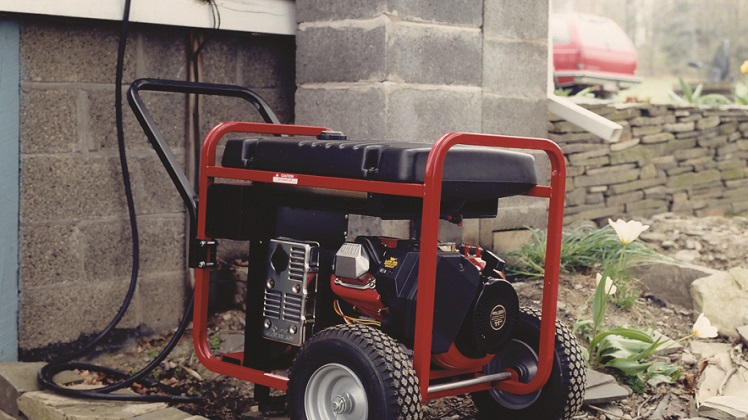Generator Safety

Choose the right-sized generator for your needs
Selecting the proper wattage of an electric generator involves more than simply adding up the wattage of the lights and appliances you want to power. Electric motors require extra power to start up. A sump pump, for example, may need more than 1,200 watts of power to start up, but only 800 or so to run afterwards. A furnace fan may need over 2,000 watts to start running, then drop to half that level. Light bulbs, water heaters, radios and other motorless end uses have the same wattage requirements to start as to run.
Some generators provide a few hundred watts of power, which limits what you can operate with them. Planning to run just a few large appliances or tools and some lights may require from 4,000 to 12,000 watts' total power from your generator, or more. Smaller generators cost less to buy, but may not meet your needs.
Tip
Always make sure that electrical devices are turned off before you connect them to a generator or generator-powered circuit. Once the generator is running, switch devices on one by one. Shut them down again before switching back to your utility service.
Generator Safety Tips
Generators can be helpful during extended power outages. Please review this safety information and always read, understand and follow the manufacturer's instructions for safe use.
- Operate outdoors in a clean, dry area. Never operate a generator indoors, in an attached garage or near a building's air intake. Without adequate ventilation, carbon-dioxide, carbon-monoxide, and other dangerous gases can build up and become deadly.
- Generator must be kept dry and properly grounded.
- Don't touch a generator if you are wet or are standing in water or on damp ground.
- After losing power, turn off main breaker or pull main fuse block.
- Generators that are directly connected to existing wiring systems must use a double-pole, double-throw (DPDT) transfer switch to prevent backfeed.
- All electrical connections must comply with the National Electric Code.
- Do not overload generator with too many appliances. Get the right-sized generator for your needs.
- Use properly sized extension cords in good condition.
- Keep an approved, fully charged fire extinguisher nearby.
- You may be liable for damage or injury to people and property that may result from an improperly installed or operated emergency generator.
Stay Safe - Reduce Fire Hazards
- Don't store gasoline or other generator fuels in your home or near the generator.
- Don't refuel the generator while it's running.
- Don't smoke, use open flames, or operate electrical switches while handling fuel.
- Don't store fuel in any container that isn't specifically designed for that purpose.
Additional Tips
- Protect vital household circuits with Ground Fault Interrupters, devices built into wall outlets that trip out if current surges. If your home doesn't already have GFIs, an electrical contractor can install them at moderate cost.
- Be sure to inspect and maintain your generator regularly.
Connecting a generator
Direct Connection:
To power your household circuits directly, you must install a transfer switch. Whether automatic or manual, a transfer switch makes sure your household wiring, or selected circuits to be supplied by the generator, can't be connected to the utility grid and to your generator at the same time. That prevents backfeed and the risk of having your generator damaged or destroyed if utility power is restored while the generator is connected to your wiring. A licensed electrician will install the switch for you. A directly connected generator can backfeed onto the power lines connected to your home. Utility transformers can then step up this backfeed to thousands of volts, and that can be a hazard to a utility lineworker making outage repairs to the electricity system. A licensed electrician will install the switch for you.
Portable Connection:
Portable generators aren't intended to be connected directly to your household wiring, but to the items you wish to power. Use properly sized, outdoor-rated cords to power items such as a stove, refrigerator, furnace, water pump, or lamps. If a portable unit is to be hooked to household circuits rather than to appliances themselves, it needs a transfer switch and a dry, solid mounting in a properly vented area, just as a permanent unit does. Portable generators need to be grounded, just like other major electrical devices. Follow the manufacturer's instructions for safe use.
